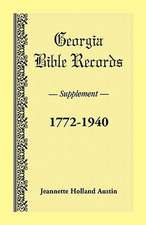The American Revolution: A History: Modern Library Chronicles
Autor Gordon S. Wooden Limba Engleză Paperback – 31 iul 2003
-Joseph J. Ellis, author of Founding Brothers
A magnificent account of the revolution in arms and consciousness that gave birth to the American republic.
When Abraham Lincoln sought to define the significance of the United States, he naturally looked back to the American Revolution. He knew that the Revolution not only had legally created the United States, but also had produced all of the great hopes and values of the American people. Our noblest ideals and aspirations-our commitments to freedom, constitutionalism, the well-being of ordinary people, and equality-came out of the Revolutionary era. Lincoln saw as well that the Revolution had convinced Americans that they were a special people with a special destiny to lead the world toward liberty. The Revolution, in short, gave birth to whatever sense of nationhood and national purpose Americans have had.
No doubt the story is a dramatic one: Thirteen insignificant colonies three thousand miles from the centers of Western civilization fought off British rule to become, in fewer than three decades, a huge, sprawling, rambunctious republic of nearly four million citizens. But the history of the American Revolution, like the history of the nation as a whole, ought not to be viewed simply as a story of right and wrong from which moral lessons are to be drawn. It is a complicated and at times ironic story that needs to be explained and understood, not blindly celebrated or condemned. How did this great revolution come about? What was its character? What were its consequences? These are the questions this short history seeks to answer. That it succeeds in such a profound and enthralling way is a tribute to Gordon Wood’s mastery of his subject, and of the historian’s craft.
From the Hardcover edition.
Din seria Modern Library Chronicles
-
 Preț: 125.06 lei
Preț: 125.06 lei -
 Preț: 94.47 lei
Preț: 94.47 lei -
 Preț: 88.68 lei
Preț: 88.68 lei -
 Preț: 88.86 lei
Preț: 88.86 lei -
 Preț: 119.77 lei
Preț: 119.77 lei -
 Preț: 94.66 lei
Preț: 94.66 lei -
 Preț: 120.59 lei
Preț: 120.59 lei -
 Preț: 112.52 lei
Preț: 112.52 lei -
 Preț: 113.97 lei
Preț: 113.97 lei -
 Preț: 103.09 lei
Preț: 103.09 lei -
 Preț: 144.04 lei
Preț: 144.04 lei -
 Preț: 122.45 lei
Preț: 122.45 lei -
 Preț: 110.47 lei
Preț: 110.47 lei -
 Preț: 105.19 lei
Preț: 105.19 lei -
 Preț: 115.75 lei
Preț: 115.75 lei -
 Preț: 117.35 lei
Preț: 117.35 lei -
 Preț: 96.67 lei
Preț: 96.67 lei -
 Preț: 109.24 lei
Preț: 109.24 lei -
 Preț: 101.71 lei
Preț: 101.71 lei -
 Preț: 96.46 lei
Preț: 96.46 lei
Preț: 98.34 lei
Nou
Puncte Express: 148
Preț estimativ în valută:
18.82€ • 19.58$ • 15.54£
18.82€ • 19.58$ • 15.54£
Carte disponibilă
Livrare economică 22 martie-05 aprilie
Preluare comenzi: 021 569.72.76
Specificații
ISBN-13: 9780812970418
ISBN-10: 0812970411
Pagini: 224
Ilustrații: 4 MAPS
Dimensiuni: 130 x 201 x 13 mm
Greutate: 0.18 kg
Ediția:Modern Library.
Editura: Modern Library
Seria Modern Library Chronicles
ISBN-10: 0812970411
Pagini: 224
Ilustrații: 4 MAPS
Dimensiuni: 130 x 201 x 13 mm
Greutate: 0.18 kg
Ediția:Modern Library.
Editura: Modern Library
Seria Modern Library Chronicles
Notă biografică
Gordon S. Wood is a professor of history at Brown University. In 1970 his book The Creation of the American Republic 1776–1787 was nominated for the National Book Award and received the Bancroft and John H. Dunning prizes. In 1993 he won the Pulitzer Prize for The Radicalism of the American Revolution. He lives in Providence, Rhode Island.
Extras
Chapter I
Origins
The origins of the Revolution necessarily lie deep in America’s past. A century and a half of dynamic developments in the British continental colonies of the New World had fundamentally transformed inherited European institutions and customary patterns of life and had left many colonists believing that they were seriously deviating from the cultivated norms of European life. In comparison with prosperous and powerful metropolitan England, America in the middle of the eighteenth century seemed a primitive, backward place, disordered and turbulent, without a real aristocracy, without magnificent courts or large urban centers, indeed, without any of the attributes of the civilized world. Consequently, the colonists repeatedly felt pressed to apologize for the crudity of their society, the insignificance of their art and literature, and the triviality of their affairs.
Suddenly in the 1760s Great Britain thrust its imperial power into this changing world with a thoroughness that had not been felt in a century and precipitated a crisis within the loosely organized empire. American resistance turned into rebellion; but as the colonists groped to make sense of the peculiarities of their society, this rebellion became a justification and idealization of American life as it had gradually and unintentionally developed over the previous century and a half. Instead of being in the backwaters of history, Americans suddenly saw themselves as a new society ideally equipped for a republican future. In this sense, as John Adams later said, “the Revolution was effected before the war commenced.” It was a change “in the minds and hearts of the people.”
But this change was not the whole American Revolution. The Revolution was not simply an intellectual endorsement of a previously existing social reality. It was also an integral part of the great transforming process that carried America into the liberal democratic society of the modern world. Although colonial America was already a different place from Europe in 1760, it still retained, along with powdered wigs and knee breeches, many traditional habits of monarchical behavior and dependent social relationships. The Revolution shattered what remained of these traditional patterns of life and prepared the way for the more fluid, bustling, individualistic world that followed.
The changes were remarkable, and they gave the American people as grand a vision of their future as any people have ever had. Americans saw their new nation not only leading a world revolution on behalf of republicanism and liberty but also becoming the place where the best of all the arts and sciences would flourish. What began as a colonial rebellion on the very edges of the civilized world was transformed into an earth-shaking event—an event that promised, as one clergyman declared, to create out of the “perishing World . . . a new World, a young world, a World of countless Millions, all in the fair Bloom of Piety.”
THE GROWTH AND MOVEMENT OF POPULATION
In 1763, Great Britain straddled the world with the greatest and richest empire since the fall of Rome. From India to the Mississippi River its armies and navies had been victorious. The Peace of Paris that concluded the Seven Years’ War— or the French and Indian War, as the Americans called it—gave Britain undisputed dominance over the eastern half of North America. From the defeated powers, France and Spain, Britain acquired huge chunks of territory in the New World—all of Canada, East and West Florida, and millions of fertile acres between the Appalachian Mountains and the Mississippi River. France turned over to Spain the territory of Louisiana in compensation for Spain’s loss of Florida; and thus this most fearsome of Britain’s enemies removed itself altogether from the North American continent.
Yet at the moment of Britain’s supremacy there were powerful forces at work that would soon, almost overnight, change everything. In the aftermath of the Seven Years’ War, British officials found themselves having to make long-postponed decisions concerning the colonies that would set in motion a chain of events that ultimately shattered the empire.
Ever since the formation of the British Empire in the late seventeenth century, royal officials and bureaucrats had been interested in reforming the ramshackle imperial structure and in expanding royal authority over the American colonists. But most of their schemes had been blocked by English ministries more concerned with the patronage of English politics than with colonial reform. Under such circumstances the empire had been allowed to grow haphazardly, without much control from London. People from different places in Europe had been allowed to settle in the colonies, and land had been given out freely.
Although few imperial officials had ever doubted that the colonies were supposed to be inferior to the mother country and dependent on it, in fact the empire had not worked that way. The relationship that had developed reflected the irrational and inefficient nature of the imperial system—the variety of offices, the diffusion of power, and the looseness of organization. Even in trade regulation, which was the empire’s main business, inefficiency, loopholes, and numerous opportunities for corruption prevented the imperial authorities from interfering substantively with the colonists’ pursuit of their own economic and social interests.
By the middle of the eighteenth century, however, new circumstances began forcing changes in this irrational but working relationship. The British colonies—there were twenty-two of them in the Western Hemisphere in 1760—were becoming too important to be treated as casually as the mother country had treated them in the first half of the eighteenth century. Dynamic developments throughout the greater British world demanded that England pay more attention to its North Ameri- can colonies.
The most basic of these developments were the growth and movement of population. In the middle decades of the eighteenth century, the number of people throughout the whole English-speaking world—in Britain and the colonies alike—was increasing at unprecedented rates. During the 1740s the population of England, which had hardly grown at all for half a century, suddenly began to increase. The populations of Ireland and Scotland had been rising steadily since the beginning of the eighteenth century. The population of the North American colonies was growing even faster— virtually exploding—and had been doing so almost since the beginning of the settlements. Indeed, the North American colonists continued to multiply more rapidly than any other people in the Western world. Between 1750 and 1770 they doubled in number, from 1 million to more than 2 million, and thereby became an even more important part of the British world. In 1700 the American population had been only one twentieth of the British and Irish populations combined; by 1770 it was nearly one fifth, and such farsighted colonists as Benjamin Franklin were predicting that sooner or later the center of the British Empire would shift to America.
Everywhere the expanding British population was in motion, moving from village to village and from continent to continent. In Britain growing numbers of migrants in a few decades created the new industrial cities of Birmingham, Manchester, and Leeds and made London the largest urban center in the Western world. A steady stream moved from the British Isles across the Atlantic to the New World. The migration of Protestant Irish and Scots that had begun early in the century increased after the Seven Years’ War of the 1750s. Between 1764 and 1776 some 125,000 people left the British Isles for the American colonies. From the colonial port towns, particularly Philadelphia, British immigrants and Germans from the Rhine Valley joined with increasing numbers of colonists to spread over half a continent along a variety of routes.
For nearly a century and a half the colonists had been confined to a several-hundred-mile-wide strip of territory along the Atlantic coast. But in the middle decades of the eighteenth century, the pressures of increasing population density began to be felt. Overcultivated soil in the East was becoming depleted. Particularly in the Chesapeake areas the number of tenants was visibly growing. Older towns now seemed overcrowded, especially in New England, and young men coming of age could no longer count on obtaining pieces of land as their fathers had done. Throughout the colonies more and more people were on the move; many drifted into the small colonial cities, which were ill equipped to handle them. By 1772 in Philadelphia, the percentage of poor was eight times greater than it had been twenty years earlier, and almshouses were being constructed and filled as never before. Most of these transient poor, however, saw the cities only as way stations in their endless search for land on which they might re-create the stability they had been forced to abandon.
With the defeat of the French, people set out in all directions, eager to take advantage of the newly acquired land in the interior. In 1759 speculators and settlers moved into the area around Lake Champlain and westward along the Mohawk River into central New York. Between 1749 and 1771, New York’s population grew from 73,348 to 168,007. Tens of thousands of colonists and new immigrants pushed into western Pennsylvania and southward into the Carolinas along routes on each side of Virginia’s Blue Ridge. Along these roads strings of towns—from York, Pennsylvania, to Camden, South Carolina—quickly developed to service the travelers and to distribute produce to distant markets. The growth of settlement was phenomenal. In Pennsylvania twenty-nine new localities were created between 1756 and 1765—more in these few years than in the colony’s entire previous history. North Carolina increased its population sixfold between 1750 and 1775 to become the fourth-largest colony.
New frontiers appeared everywhere throughout British North America. By the early 1760s hunters and explorers such as Daniel Boone began opening up paths westward through the Appalachians. Settlers soon followed. Some moved southward to the valley of the Holston River and to the headwaters of the Cumberland and Tennessee Rivers, and others spread northwest into the Ohio Valley and the Kentucky basin. Some drifted down the Ohio and Mississippi Rivers to join overland migrants from the southern colonies in the new province of West Florida, and thus completed a huge encirclement of the new western territory.
During the decade and a half before Independence, New England throbbed with movement. By the early 1760s the number of transients drifting from town to town through- out the region multiplied dramatically, in some counties doubling or tripling the numbers of the previous decade. Many farmers gave up searching for opportunities within established communities and set out for distant places on the very edges of the expanded empire. Massachusetts and Connecticut colonists trekked not only to northern New England and Nova Scotia, but to areas as far away as the Susquehanna River in Pennsylvania and the lower Mississippi River. Indeed, the largest single addition to the population of West Florida came from the settlement of four hundred families from Connecticut in 1773–74. Between 1760 and 1776 some 20,000 people from southern New England moved up the Connecticut River into New Hampshire and into what would later become Vermont. In that same period migrants from Massachusetts streamed into Maine and founded 94 towns. A total of 264 new towns were established in northern New England during the years between 1760 and 1776.
British and colonial authorities could scarcely comprehend the meaning of this enormous explosion of people in search of land. The colonists, one astonished official observed, were moving “as their avidity and restlessness incite them. They acquire no attachment to place: but wandering about seems engrafted in their nature; and it is a weakness incident to it that they should forever imagine the lands further off are still better than those upon which they are already settled.” Land fever infected all levels of society. While Ezra Stiles, a minister in Newport, Rhode Island, and later the president of Yale University, bought and sold small shares in places all over New England and in Pennsylvania and New York, more influential figures like Benjamin Franklin were concocting huge speculative schemes in the vast unsettled lands of the West.
All this movement had far-reaching effects on American society and its place in the British Empire. The fragmentation of households, churches, and communities increased, and the colonial governments lost control of the mushrooming new settlements. In the backcountry, lawlessness and vagrancy became common, and disputes over land claims and colonial boundaries increased sharply. But the most immediate effect of this rapid spread of people—and the effect that was most obvious to imperial officials by mid-century—was the pressure that the migrations placed on the native peoples.
At the beginning of the Seven Years’ War, the problems of restless and angry Native Americans in the West compelled the British government for the first time to take over from the colonies the direct control of Indian affairs. Two British officials, one each for the northern and southern regions, now had the task of pacifying tribes of Indians, whom one of the superintendents described as “the most formidable of any uncivilized body of people in the world.”
Although the European invasion of the New World had drastically reduced the numbers of the native peoples, largely through the spread of disease, about 150,000 Indians remained in the area east of the Mississippi. New England had few hostile Indians, but in New York there were 2,000 warriors, mostly fierce Senecas, left from the once formidable Six Nations of the Iroquois. In the Susquehanna and Ohio Valleys dwelled a variety of tribes, mostly Delawares, Shawnees, Mingos, and Hurons, who claimed about 12,000 fighting men. On the southern frontiers the Indian presence was even more forbidding. From the Carolinas to the Yazoo River were some 14,000 warriors, mainly Cherokees, Creeks, Chocktaws, and Chickasaws. Although these native peoples were often deeply divided from one another and had reached different degrees of accommodation with the European settlers, most of them were anxious to resist further white encroachment on their lands.
After French authority had been eliminated from Canada and Spanish authority from Florida, the Native Americans were no longer able to play one European power off against the other. Britain now had sole responsibility for regulating the profitable fur trade and for maintaining peace between whites and Indians. The problems were awesome. Not only were many whites prepared to use brandy and rum to achieve their aims, but they had conflicting interests. Some traders favored regulation of the fur trade, and others did not. But all traders favored the establishment in the West of Indian reservations that settlers would not be permitted to invade, and they drew on the support of humanitarian groups who were concerned with the Indians’ fate. Land speculators, however, wanted to move the Indians westward and open more territory for white settlement. Confused, lied to, and cheated of their land and their furs by greedy white traders and land-hungry migrants, the Indians retaliated with atrocities and raids. Some tribes attempted to form coalitions and wage full-scale war.
Thus the end of the Seven Years’ War did not end vio- lence on the frontier. From the devastating Cherokee War of 1759–61 in South Carolina to the assault on the Shawnees in 1774 by Lord Dunmore, the royal governor of Virginia, British officials repeatedly had to use royal troops to put down Indian revolts. The biggest Indian rebellion of the period occurred in 1763 following the British takeover of the former French forts in the West. In just a few weeks Indians from several tribes that had joined together under the leadership of an Ottawa chief named Pontiac surprised and destroyed all but three of the British posts west of the Appalachians. Before they were pushed back by British troops, the angry warriors had penetrated eastward into the backcountry of Pennsylvania, Maryland, and Virginia and had killed more than 2,000 colonists. It is no wonder that many royal authorities in the 1760s concluded that only the presence of regular troops of the British army could maintain peace in the American borderlands of the empire.
From the Hardcover edition.
Origins
The origins of the Revolution necessarily lie deep in America’s past. A century and a half of dynamic developments in the British continental colonies of the New World had fundamentally transformed inherited European institutions and customary patterns of life and had left many colonists believing that they were seriously deviating from the cultivated norms of European life. In comparison with prosperous and powerful metropolitan England, America in the middle of the eighteenth century seemed a primitive, backward place, disordered and turbulent, without a real aristocracy, without magnificent courts or large urban centers, indeed, without any of the attributes of the civilized world. Consequently, the colonists repeatedly felt pressed to apologize for the crudity of their society, the insignificance of their art and literature, and the triviality of their affairs.
Suddenly in the 1760s Great Britain thrust its imperial power into this changing world with a thoroughness that had not been felt in a century and precipitated a crisis within the loosely organized empire. American resistance turned into rebellion; but as the colonists groped to make sense of the peculiarities of their society, this rebellion became a justification and idealization of American life as it had gradually and unintentionally developed over the previous century and a half. Instead of being in the backwaters of history, Americans suddenly saw themselves as a new society ideally equipped for a republican future. In this sense, as John Adams later said, “the Revolution was effected before the war commenced.” It was a change “in the minds and hearts of the people.”
But this change was not the whole American Revolution. The Revolution was not simply an intellectual endorsement of a previously existing social reality. It was also an integral part of the great transforming process that carried America into the liberal democratic society of the modern world. Although colonial America was already a different place from Europe in 1760, it still retained, along with powdered wigs and knee breeches, many traditional habits of monarchical behavior and dependent social relationships. The Revolution shattered what remained of these traditional patterns of life and prepared the way for the more fluid, bustling, individualistic world that followed.
The changes were remarkable, and they gave the American people as grand a vision of their future as any people have ever had. Americans saw their new nation not only leading a world revolution on behalf of republicanism and liberty but also becoming the place where the best of all the arts and sciences would flourish. What began as a colonial rebellion on the very edges of the civilized world was transformed into an earth-shaking event—an event that promised, as one clergyman declared, to create out of the “perishing World . . . a new World, a young world, a World of countless Millions, all in the fair Bloom of Piety.”
THE GROWTH AND MOVEMENT OF POPULATION
In 1763, Great Britain straddled the world with the greatest and richest empire since the fall of Rome. From India to the Mississippi River its armies and navies had been victorious. The Peace of Paris that concluded the Seven Years’ War— or the French and Indian War, as the Americans called it—gave Britain undisputed dominance over the eastern half of North America. From the defeated powers, France and Spain, Britain acquired huge chunks of territory in the New World—all of Canada, East and West Florida, and millions of fertile acres between the Appalachian Mountains and the Mississippi River. France turned over to Spain the territory of Louisiana in compensation for Spain’s loss of Florida; and thus this most fearsome of Britain’s enemies removed itself altogether from the North American continent.
Yet at the moment of Britain’s supremacy there were powerful forces at work that would soon, almost overnight, change everything. In the aftermath of the Seven Years’ War, British officials found themselves having to make long-postponed decisions concerning the colonies that would set in motion a chain of events that ultimately shattered the empire.
Ever since the formation of the British Empire in the late seventeenth century, royal officials and bureaucrats had been interested in reforming the ramshackle imperial structure and in expanding royal authority over the American colonists. But most of their schemes had been blocked by English ministries more concerned with the patronage of English politics than with colonial reform. Under such circumstances the empire had been allowed to grow haphazardly, without much control from London. People from different places in Europe had been allowed to settle in the colonies, and land had been given out freely.
Although few imperial officials had ever doubted that the colonies were supposed to be inferior to the mother country and dependent on it, in fact the empire had not worked that way. The relationship that had developed reflected the irrational and inefficient nature of the imperial system—the variety of offices, the diffusion of power, and the looseness of organization. Even in trade regulation, which was the empire’s main business, inefficiency, loopholes, and numerous opportunities for corruption prevented the imperial authorities from interfering substantively with the colonists’ pursuit of their own economic and social interests.
By the middle of the eighteenth century, however, new circumstances began forcing changes in this irrational but working relationship. The British colonies—there were twenty-two of them in the Western Hemisphere in 1760—were becoming too important to be treated as casually as the mother country had treated them in the first half of the eighteenth century. Dynamic developments throughout the greater British world demanded that England pay more attention to its North Ameri- can colonies.
The most basic of these developments were the growth and movement of population. In the middle decades of the eighteenth century, the number of people throughout the whole English-speaking world—in Britain and the colonies alike—was increasing at unprecedented rates. During the 1740s the population of England, which had hardly grown at all for half a century, suddenly began to increase. The populations of Ireland and Scotland had been rising steadily since the beginning of the eighteenth century. The population of the North American colonies was growing even faster— virtually exploding—and had been doing so almost since the beginning of the settlements. Indeed, the North American colonists continued to multiply more rapidly than any other people in the Western world. Between 1750 and 1770 they doubled in number, from 1 million to more than 2 million, and thereby became an even more important part of the British world. In 1700 the American population had been only one twentieth of the British and Irish populations combined; by 1770 it was nearly one fifth, and such farsighted colonists as Benjamin Franklin were predicting that sooner or later the center of the British Empire would shift to America.
Everywhere the expanding British population was in motion, moving from village to village and from continent to continent. In Britain growing numbers of migrants in a few decades created the new industrial cities of Birmingham, Manchester, and Leeds and made London the largest urban center in the Western world. A steady stream moved from the British Isles across the Atlantic to the New World. The migration of Protestant Irish and Scots that had begun early in the century increased after the Seven Years’ War of the 1750s. Between 1764 and 1776 some 125,000 people left the British Isles for the American colonies. From the colonial port towns, particularly Philadelphia, British immigrants and Germans from the Rhine Valley joined with increasing numbers of colonists to spread over half a continent along a variety of routes.
For nearly a century and a half the colonists had been confined to a several-hundred-mile-wide strip of territory along the Atlantic coast. But in the middle decades of the eighteenth century, the pressures of increasing population density began to be felt. Overcultivated soil in the East was becoming depleted. Particularly in the Chesapeake areas the number of tenants was visibly growing. Older towns now seemed overcrowded, especially in New England, and young men coming of age could no longer count on obtaining pieces of land as their fathers had done. Throughout the colonies more and more people were on the move; many drifted into the small colonial cities, which were ill equipped to handle them. By 1772 in Philadelphia, the percentage of poor was eight times greater than it had been twenty years earlier, and almshouses were being constructed and filled as never before. Most of these transient poor, however, saw the cities only as way stations in their endless search for land on which they might re-create the stability they had been forced to abandon.
With the defeat of the French, people set out in all directions, eager to take advantage of the newly acquired land in the interior. In 1759 speculators and settlers moved into the area around Lake Champlain and westward along the Mohawk River into central New York. Between 1749 and 1771, New York’s population grew from 73,348 to 168,007. Tens of thousands of colonists and new immigrants pushed into western Pennsylvania and southward into the Carolinas along routes on each side of Virginia’s Blue Ridge. Along these roads strings of towns—from York, Pennsylvania, to Camden, South Carolina—quickly developed to service the travelers and to distribute produce to distant markets. The growth of settlement was phenomenal. In Pennsylvania twenty-nine new localities were created between 1756 and 1765—more in these few years than in the colony’s entire previous history. North Carolina increased its population sixfold between 1750 and 1775 to become the fourth-largest colony.
New frontiers appeared everywhere throughout British North America. By the early 1760s hunters and explorers such as Daniel Boone began opening up paths westward through the Appalachians. Settlers soon followed. Some moved southward to the valley of the Holston River and to the headwaters of the Cumberland and Tennessee Rivers, and others spread northwest into the Ohio Valley and the Kentucky basin. Some drifted down the Ohio and Mississippi Rivers to join overland migrants from the southern colonies in the new province of West Florida, and thus completed a huge encirclement of the new western territory.
During the decade and a half before Independence, New England throbbed with movement. By the early 1760s the number of transients drifting from town to town through- out the region multiplied dramatically, in some counties doubling or tripling the numbers of the previous decade. Many farmers gave up searching for opportunities within established communities and set out for distant places on the very edges of the expanded empire. Massachusetts and Connecticut colonists trekked not only to northern New England and Nova Scotia, but to areas as far away as the Susquehanna River in Pennsylvania and the lower Mississippi River. Indeed, the largest single addition to the population of West Florida came from the settlement of four hundred families from Connecticut in 1773–74. Between 1760 and 1776 some 20,000 people from southern New England moved up the Connecticut River into New Hampshire and into what would later become Vermont. In that same period migrants from Massachusetts streamed into Maine and founded 94 towns. A total of 264 new towns were established in northern New England during the years between 1760 and 1776.
British and colonial authorities could scarcely comprehend the meaning of this enormous explosion of people in search of land. The colonists, one astonished official observed, were moving “as their avidity and restlessness incite them. They acquire no attachment to place: but wandering about seems engrafted in their nature; and it is a weakness incident to it that they should forever imagine the lands further off are still better than those upon which they are already settled.” Land fever infected all levels of society. While Ezra Stiles, a minister in Newport, Rhode Island, and later the president of Yale University, bought and sold small shares in places all over New England and in Pennsylvania and New York, more influential figures like Benjamin Franklin were concocting huge speculative schemes in the vast unsettled lands of the West.
All this movement had far-reaching effects on American society and its place in the British Empire. The fragmentation of households, churches, and communities increased, and the colonial governments lost control of the mushrooming new settlements. In the backcountry, lawlessness and vagrancy became common, and disputes over land claims and colonial boundaries increased sharply. But the most immediate effect of this rapid spread of people—and the effect that was most obvious to imperial officials by mid-century—was the pressure that the migrations placed on the native peoples.
At the beginning of the Seven Years’ War, the problems of restless and angry Native Americans in the West compelled the British government for the first time to take over from the colonies the direct control of Indian affairs. Two British officials, one each for the northern and southern regions, now had the task of pacifying tribes of Indians, whom one of the superintendents described as “the most formidable of any uncivilized body of people in the world.”
Although the European invasion of the New World had drastically reduced the numbers of the native peoples, largely through the spread of disease, about 150,000 Indians remained in the area east of the Mississippi. New England had few hostile Indians, but in New York there were 2,000 warriors, mostly fierce Senecas, left from the once formidable Six Nations of the Iroquois. In the Susquehanna and Ohio Valleys dwelled a variety of tribes, mostly Delawares, Shawnees, Mingos, and Hurons, who claimed about 12,000 fighting men. On the southern frontiers the Indian presence was even more forbidding. From the Carolinas to the Yazoo River were some 14,000 warriors, mainly Cherokees, Creeks, Chocktaws, and Chickasaws. Although these native peoples were often deeply divided from one another and had reached different degrees of accommodation with the European settlers, most of them were anxious to resist further white encroachment on their lands.
After French authority had been eliminated from Canada and Spanish authority from Florida, the Native Americans were no longer able to play one European power off against the other. Britain now had sole responsibility for regulating the profitable fur trade and for maintaining peace between whites and Indians. The problems were awesome. Not only were many whites prepared to use brandy and rum to achieve their aims, but they had conflicting interests. Some traders favored regulation of the fur trade, and others did not. But all traders favored the establishment in the West of Indian reservations that settlers would not be permitted to invade, and they drew on the support of humanitarian groups who were concerned with the Indians’ fate. Land speculators, however, wanted to move the Indians westward and open more territory for white settlement. Confused, lied to, and cheated of their land and their furs by greedy white traders and land-hungry migrants, the Indians retaliated with atrocities and raids. Some tribes attempted to form coalitions and wage full-scale war.
Thus the end of the Seven Years’ War did not end vio- lence on the frontier. From the devastating Cherokee War of 1759–61 in South Carolina to the assault on the Shawnees in 1774 by Lord Dunmore, the royal governor of Virginia, British officials repeatedly had to use royal troops to put down Indian revolts. The biggest Indian rebellion of the period occurred in 1763 following the British takeover of the former French forts in the West. In just a few weeks Indians from several tribes that had joined together under the leadership of an Ottawa chief named Pontiac surprised and destroyed all but three of the British posts west of the Appalachians. Before they were pushed back by British troops, the angry warriors had penetrated eastward into the backcountry of Pennsylvania, Maryland, and Virginia and had killed more than 2,000 colonists. It is no wonder that many royal authorities in the 1760s concluded that only the presence of regular troops of the British army could maintain peace in the American borderlands of the empire.
From the Hardcover edition.
Recenzii
“Remarkable, invaluable.” —Jonathan Yardley, The Washington Post Book World
“Wood is the preeminent historian of the Revolution. . . . Here . . . he manages to boil down to its essence this crucial period in the country’s history without in the process reducing it to History Lite. . . . His account of the emergence and development of rank-and-file political opinion is especially provocative and informative, but then so is just about everything else in this remarkable, invaluable book.” —The Washington Post Book World
“An elegant, concise and lucid summary of the Revolution’s origins, the war itself, and the social and political changes wrought by the struggle for American independence.” —The Wall Street Journal
“This slim book tells a big story: one that invites the reader to contemplate the relationships between liberty, power, rights and the unpredictable outcomes of human action.” —Los Angeles Times Book Review
“An elegant synthesis done by the leading scholar in the field, which nicely integrates the work on the American Revolution over the last three decades but never loses contact with the older, classic questions that we have been arguing about for over two hundred years.” —Joseph Ellis
“Wood is the preeminent historian of the Revolution. . . . Here . . . he manages to boil down to its essence this crucial period in the country’s history without in the process reducing it to History Lite. . . . His account of the emergence and development of rank-and-file political opinion is especially provocative and informative, but then so is just about everything else in this remarkable, invaluable book.” —The Washington Post Book World
“An elegant, concise and lucid summary of the Revolution’s origins, the war itself, and the social and political changes wrought by the struggle for American independence.” —The Wall Street Journal
“This slim book tells a big story: one that invites the reader to contemplate the relationships between liberty, power, rights and the unpredictable outcomes of human action.” —Los Angeles Times Book Review
“An elegant synthesis done by the leading scholar in the field, which nicely integrates the work on the American Revolution over the last three decades but never loses contact with the older, classic questions that we have been arguing about for over two hundred years.” —Joseph Ellis


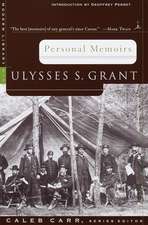
![The Civil War Boxed Set [With American Homer]](https://i0.books-express.ro/bt/9780679643708/the-civil-war-boxed-set-with-american-homer.jpg)

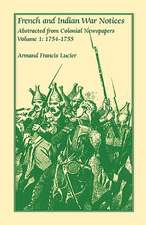


![A History of Jefferson County, West Virginia [1719-1940]](https://i0.books-express.ro/bt/9780788422508/a-history-of-jefferson-county-west-virginia-1719-1940.jpg)
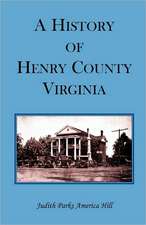



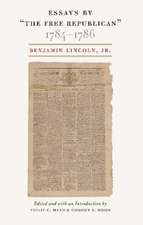
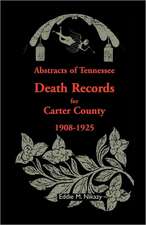
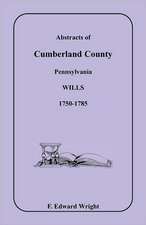


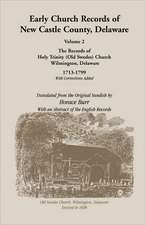
![Abstracts of Philadelphia County [Pennsylvania] Wills, 1726-1747](https://i1.books-express.ro/bt/9781585493111/abstracts-of-philadelphia-county-pennsylvania-wills-1726-1747.jpg)





